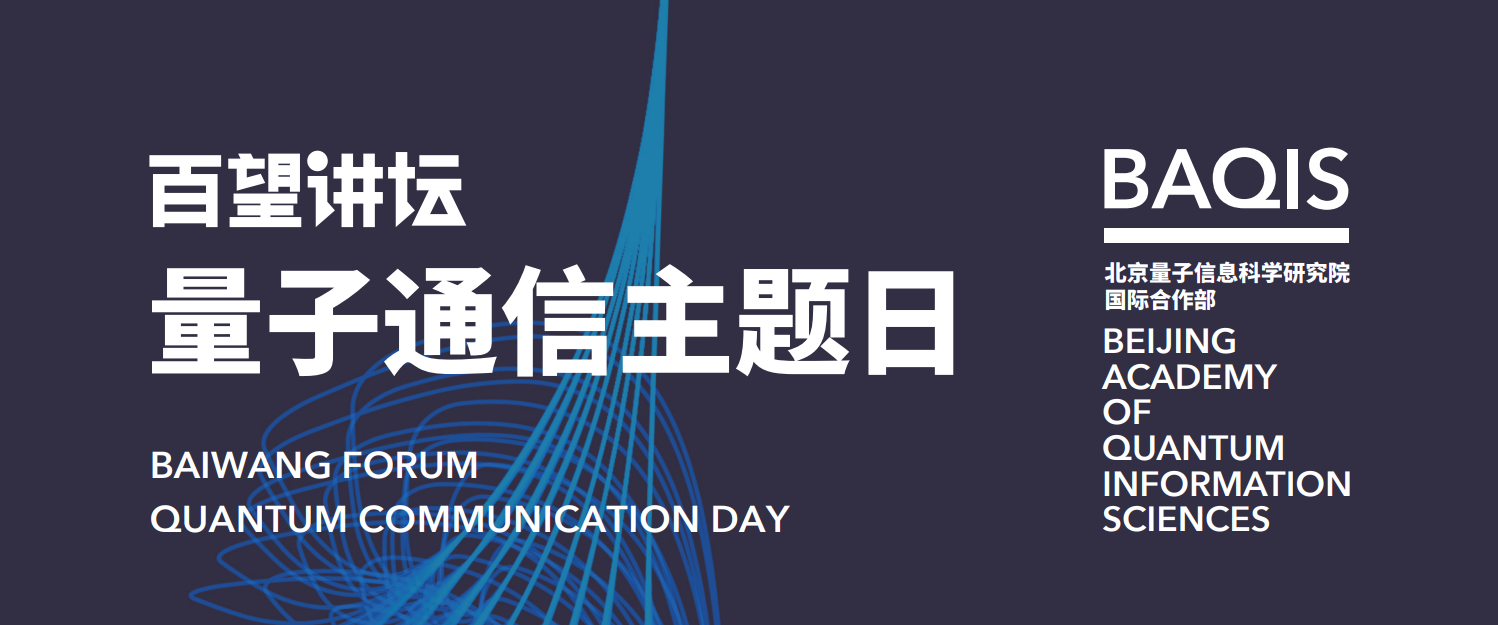Baiwang Forum 24: On the road from classical to quantum coding
2022/06/16

Date and Time: 16-June-2022 16:00-17:00
Speaker: Prof. Lajos Hanzo, Chair of Telecommunications, Head of Next-Generation Wireless at the University of Southampton, UK. FREng, FIEEE, FIET, RS Wolfson Fellow.
Host: Gui-Lu Long (Tsinghua Univ.& BAQIS)
Title: On the road from classical to quantum coding
Abstract:
The performance of quantum computing and communica-tions critically hinges on the severity of quantum decoher-ence, which is often modelled by the so-called depolarizing channel. While classical-domain signals are typically pro-tected by classical forward error correction (FEC) codes, their quantum-domain counterparts rely on quantum FECs (QFEC). Given the vast body of literature on classical FEC codes, this presentation sets out from the family of optimal maximum-minimum-distance classical codes and develops their quantum-domain counterparts by exploiting the so-called symplectic condition based on [1] - [7]. They are capable of reducing the associated depolarizing error prob-ability or improving the ?delity of quantum systems.
[1] Z. Babar, P. Botsinis, D. Alanis, S. X. Ng, and L. Hanzo, “The road from classical to quantum codes: A hashing bound approaching design proce- dure,” IEEE Access, vol. 3, pp. 146–176, 2015.
[2] ——, “Fifteen years of quantum LDPC coding and improved decoding strategies,” IEEE Access, vol. 3, pp. 2492–2519, 2015.
[3] Z. Babar, Z.B.K. Egilmez, L. Xiang, D. Chandra, R.G. Maunder, S.X. Ng & L. Hanzo Polar Codes and Their Quantum-Domain Counterparts IEEE Communications Surveys & Tutorials, 2020, Vol. 22
[4] D. Chandra, Z. Babar, H. V. Nguyen, P. Botsinis, D. Alanis, S. X. Ng, and L. Hanzo, “Quantum Coding Bounds and a Closed-Form Approximation of the Minimum Distance Versus Quantum Coding Rate,” IEEE Access, vol. 5, pp. 11557–11581, 2017.
DOI: 10.1109/ACCESS.2017.2716367.
[5] D. Chandra, Z. Babar, H. V. Nguyen, D. Alanis, P. Botsinis, S. X. Ng, and
L. Hanzo, “Quantum Topological Error Correction Codes: The Classical-to- Quantum Isomorphism Perspective,” IEEE Access, vol. 6, pp. 13729–13757, 2018.
DOI: 10.1109/ACCESS.2017.2784417.
[6] D. Chandra, Z. Babar, S. X. Ng, and L. Hanzo, “Near-Hashing-Bound Multiple-Rate Quantum Turbo Short-Block Codes,” IEEE Access, vol. 7, pp. 52712–52730, 2019.
DOI: 10.1109/ACCESS.2019.2911515.
[7] D. Chandra, Z. Babar, H. V. Nguyen, D. Alanis, P. Botsinis, S. X. Ng, and L. Hanzo, “Quantum Topological Error Correction Codes Improve The Per- formance of Transversal Clifford Gates,” IEEE Access, vol. 7, pp. 121501– 121529, 2019.
DOI:10.1109/ACCESS.2019.2936795.
About the Speaker:
 Lajos Hanzo FREng, FIEEE, FIET, RS Wolfson Fellow, received his 5- year Master degree in electronics from the Technical University of Budapest in 1976, his doctorate in 1983 and his Doctor of Sciences (DSc) degree in 2004. During his career in telecommu- nications he has held various research and academic posts in Hungary, Ger- many and the UK. Since 1986 he has been with the School of ECS, University of Southampton, UK, where he holds the Chair in Telecommunications. His current re- search interests are featured at (http://www-mobile.ecs.soton.ac.uk)
Lajos Hanzo FREng, FIEEE, FIET, RS Wolfson Fellow, received his 5- year Master degree in electronics from the Technical University of Budapest in 1976, his doctorate in 1983 and his Doctor of Sciences (DSc) degree in 2004. During his career in telecommu- nications he has held various research and academic posts in Hungary, Ger- many and the UK. Since 1986 he has been with the School of ECS, University of Southampton, UK, where he holds the Chair in Telecommunications. His current re- search interests are featured at (http://www-mobile.ecs.soton.ac.uk)
 中文
中文 Email
Email QCloud
QCloud Log in
Log in
